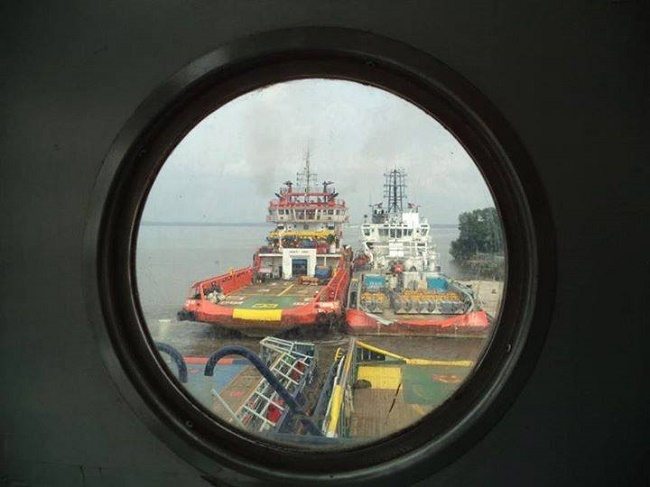

When one travels by ship, the ship’s windows are the most important and striking feature on a ship’s side. The ship’s windows are known as portholes, shortened form of the word ‘porthole window.’ Portholes, however, are also not just a part of ships but are found in submarines, airplane and spacecraft.
Sometimes ship portholes are known as ‘side scuttles’, mainly because they are located on the side of a vessel. Today, they come in different styles to match a ship’s interior design. Sometimes they are used as a frame or a decorative piece on a small boat or a yacht.
Portholes have been a part of ships since the beginning. They have retained their circular form and are unique compared to windows in other means of transportation.
The portholes are designed so that when a ship cruises into the middle of the seas, one can get the best possible ocean view from the ship’s porthole. For this, the height of the portholes is strategically decided, and one end of the portholes is hinged.


A porthole was initially constructed to be a window in those areas of the ship where airing was a significant problem. This allowed light and fresh air to enter those parts. This construction pattern immensely helped the people working in these areas to work continuously for long hours. However, later on, portholes came to be built on every room and cabin on the ship.
The materials used for building ship portholes are stainless steel, aluminium, brass, bronze, and iron. The glass used in the portholes is compulsorily made involving sand. Making glass is known as sand-casting; silica sand is the primary material for this process. To make the glass, a mixture of silica, lime and ash is mixed, heated and cooled until the right consistency of glass is achieved.
The process further involves constantly re-heating the mixture in huge furnaces so that the glass reaches its appropriate thickness. Then this mixture is laid on top of a melting tin, ensuring that the proper shape of the glass is achieved. The glass is finally cooled. This process is called tempering, providing the glass does not break or shatter.
Materials such as brass and bronze are preferred over iron and steel because iron rusts because of seawater, and steel bends after a certain period. Brass portholes and bronze remain effective for a longer time.
The glass is put in a metal cover or steel frame with a shaft or screw to keep it firm. Hence, the watertight glass cover protects the ship windows from breaking or damage.
A ship’s porthole measures around two feet in diameter, while its weight can go up to around 100 pounds. Ship portholes are generally because of the durability factor. They offer resistance not only from sunlight but also from sea and rainwater. The heaviness of the ship’s portholes also ensures that no damage is caused at any time on the boat.
Portholes have become quite trendy. One can find numerous antique maritime portholes for decoration purposes. But just because of their utility, they are still used extensively on ships worldwide.
A porthole is a small circular opening or a glass window in a ship, aeroplane, submarine or spacecraft. They are bound in a frame and allow one to see outside.
A round shape is preferred to maintain a vessel’s structural integrity. Oceans and seas put immense pressure on the ship’s body, and square or rectangular windows are more susceptible to stress and might become weak at the corners. A circular window is tougher and also suits the overall design.
Portholes have a varying range. Some are several inches to over two feet and weigh from several pounds to more than a hundred pounds. Much of their weight is of the glass, which should be less than two inches thick for safety purposes.
Uusally, materials like stainless steel, brass, bronze, iron and aluminium make ship portholes. Also, the glass used for making portholes is mandatorily made of sand, and the process is called sand-casting. The primary material used in this process is silica sand.
The word port is derived from the french word Porte, meaning door. In today’s cruise ships, most portholes only open slightly, and the others are usually built for design and for letting natural light inside.
You might also like to read-
Disclaimer: The authors’ views expressed in this article do not necessarily reflect the views of The Marine Learners. Data and charts, if used, in the article have been sourced from available information and have not been authenticated by any statutory authority. The author and The Marine Learners do not claim it to be accurate nor accept any responsibility for it. The views constitute only the opinions and do not constitute any guidelines or recommendations on any course of action to be followed by the reader.
The article or images cannot be reproduced, copied, shared, or used in any form without the permission of the author and The Marine Learners.










We believe that knowledge is power, and we’re committed to empowering our readers with the information and resources they need to succeed in the merchant navy industry.
Whether you’re looking for advice on career planning, news and analysis, or just want to connect with other aspiring merchant navy applicants, The Marine Learners is the place to be.